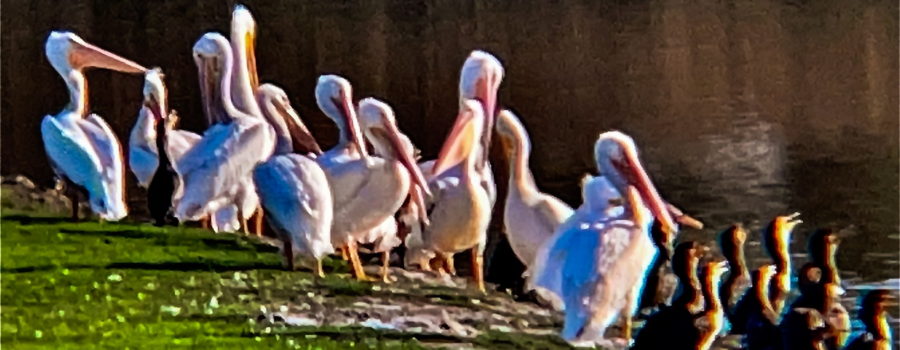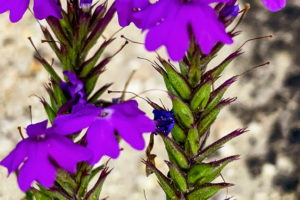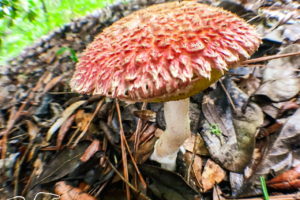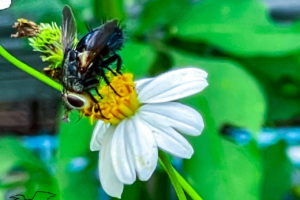The Beautiful White Pelican is a Welcome Snowbird in Florida

Back in December, I made a trip down to St. Petersburg, Florida to see some friends. Of course, any time I go anywhere, even back and forth to work, I’m looking for interesting plants, flowers, and animals. While in St. Pete, I saw quite a few intersting things, but one bird I had hoped to see, but didn’t was the American white pelican (Pelecanus erythrorhynchos). I did see plenty of the year round resident brown pelicans (Pelicanus occidentalis), but none of the winter migrant white ones. I honestly figured that I would have to wait until another year to see any since I missed them in St. Pete. But one afternoon just a couple weeks ago I was delighted to come across a whole flock of them not far from my home!

This time I was on my way to Orlando to see my brother and I was headed out of our little town towards the interstate when I passed a pond and spotted a large bunch of white pelicans! I couldn’t believe it! Of course, I was on my way somewhere, and on a time schedule so I couldn’t really stop right then, but I did note exactly where the pond was for future reference. After I got back from my trip I headed out to the pond with fingers crossed that the birds would still be there, and yes, they were! I spent nearly two hours out there taking pictures of them, and just enjoying watching them. They were mainly in a large group on the bank of the pond, but from time to time one or two would swim out onto the pond or several of them would take off into the air, I assume to look for roosting sites since they never came back. I stayed watching them until most if them had left and the sun was definitely starting to sink.

In Florida, the white pelican is strictly a winter resident, and can usually only be seen between December and late February. In late February to early March, they begin their migration back to the northern United States and southern Canada, where they breed. Usually while in Florida they are most frequently found in coastal areas, although they can also occasionally be found on inland lakes, ponds, or canals. When in their breeding territory, however, they are almost always found inland. That’s why I had hoped to see them in St. Pete, but would never have thought to look for them almost in my own backyard! Like their cousins the brown pelicans, they feed mainly on fish, but will also take snakes, lizards, crawfish, salamanders, and tadpoles. Unlike brown pelicans, though, they do not dive for fish. Instead, they fish in shallow waters by scooping their prey from the surface with their large bills. It is not at all uncommon to see them hunt as a team and herd schools of fish into the shallows making them easy to scoop up in large numbers.

White pelicans are one of the largest birds in North America, and adults can have a wingspan of up to 9 1/2 feet. Yet in the air, they are very graceful fliers, often coasting almost effortlessly on high thermals. Similarly, on the water their large webbed feet make them able to float and swim very comfortably. On land they may seem a bit awkward but they are surprisingly fast. They tend to be found in good sized groups known as squadrons and often congregate with other water birds like double crested cormorants, anhingas, grebes, ducks, and geese. Unlike brown pelicans, they prefer to stay away from people and are rarely seen in heavily populated areas like fishing piers or boat docks. Needless to say, I was quite thrilled to get to spend some time with this beautiful group of birds. If they haven’t already, I’m sure they will be leaving Florida soon, but I will make a point of looking for them again next winter now that I know where to look!






Recent Comments